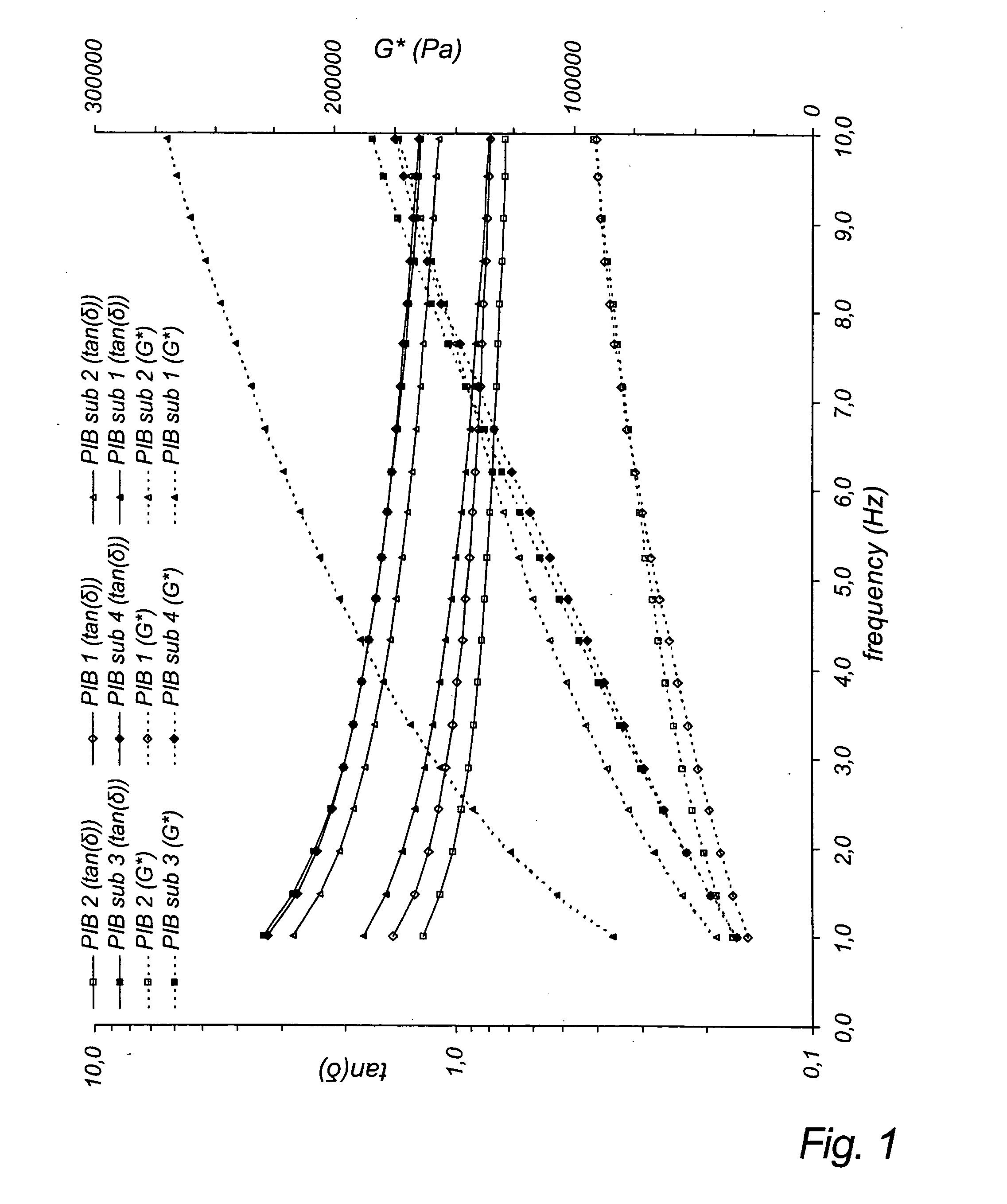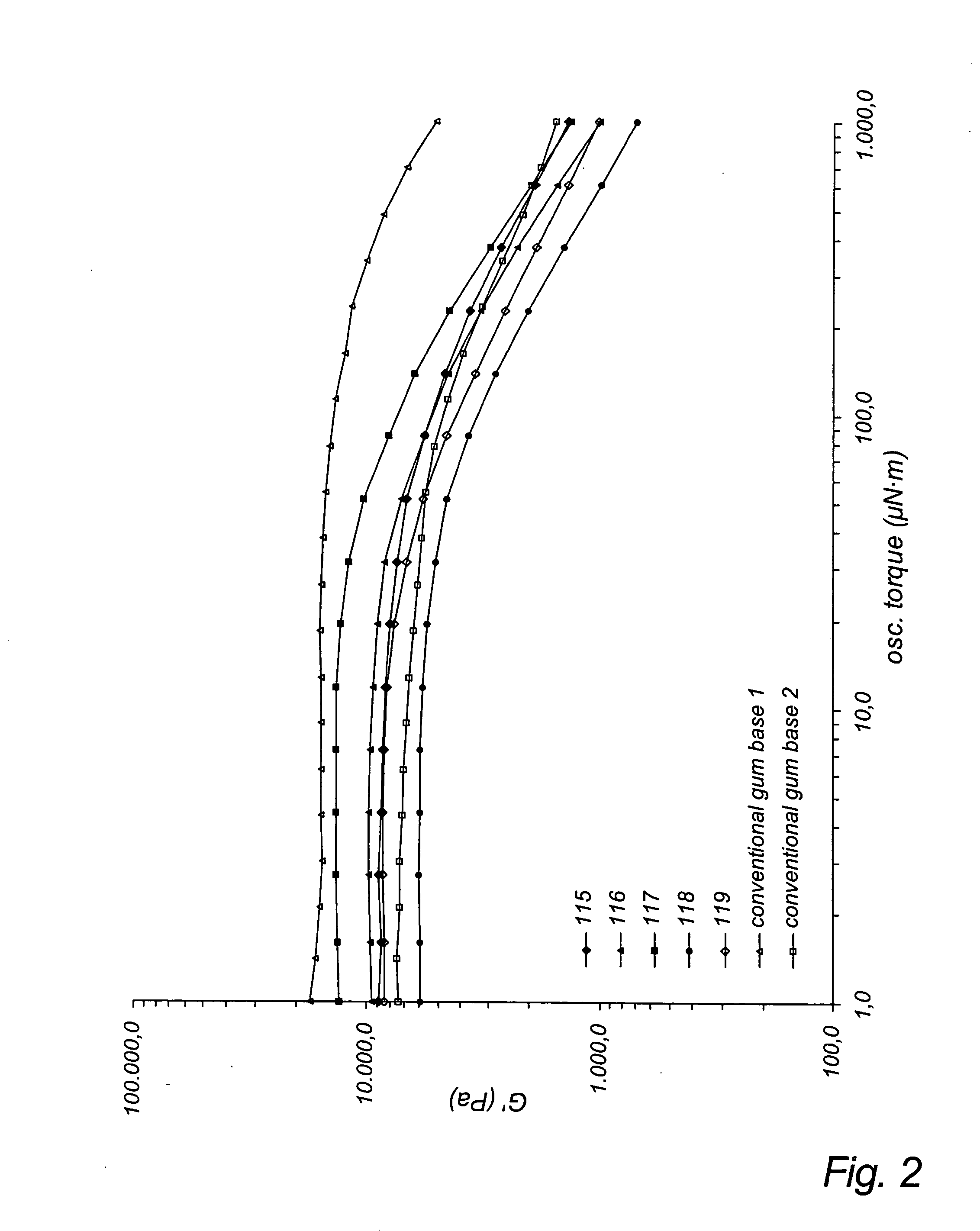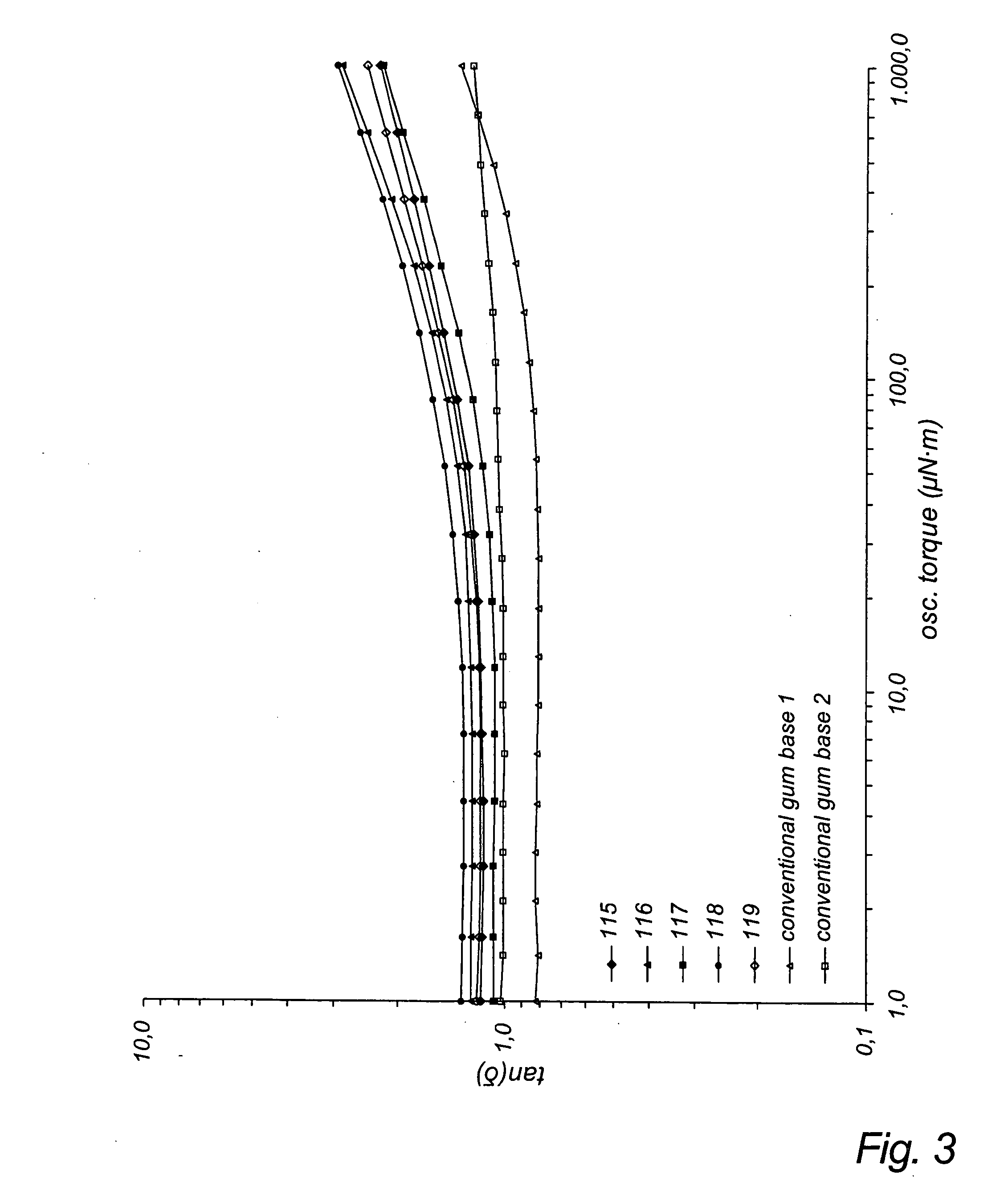Degradable elastomers for chewing gum base
- Summary
- Abstract
- Description
- Claims
- Application Information
AI Technical Summary
Benefits of technology
Problems solved by technology
Method used
Image
Examples
example 1
[0087] Evaluation of Presently Applied Butyl Rubber in Chewing Gum Base
[0088] The elastomer portion of chewing gum base in a standard gum base typically comprises approximately 3-30% of the total material, and often consists of two polyisobutylene (PIB) fractions differing in molecular weight. A sample of PIB presently applied as elastomer in gum base, was analyzed by size exclusion chromatography (SEC) (see Table 1). The low molecular weight component of the PIB consisted of a material with a weight average molecular weight, Mw, of about 60,000 g / mol and a polydispersity (PDI) that varies in the range of 1.5-2.2.
1TABLE 1 SEC Molecular weight data of currently applied PIB elastomers Sample Mn Mw PDI (Mw / Mn) PIB 1 27,000 58,400 2.16 PIB 2 39,800 59,200 1.49
example 2
[0089] Preparation of Polyisobutylene Substitutes
[0090] Poly(.epsilon.-caprolactone-co-.delta.-valerolactone) (denoted poly(CAP-co-VAL) was prepared with a feed ratio of 60 mol % .epsilon.-caprolactone and 40% .delta.-valerolactone (60 CAP:40 VAL). Poly(.epsilon.-caprolactone-co-.delta.-valerolactone-co-trimethylene carbonate) (denoted poly(CAP-co-VAL-TMC)) was prepared with a feed a ratio of 50 mol % .epsilon.-caprolactone, 40 mol % .delta.-valerolactone and 10 mol % trimethylene carbonate.
[0091] The samples indicated in the below Table 2 were prepared for evaluation as polyisobutylene (PIB) substitutes.
2TABLE 2 Tg Tm Mn Sample Composition (.degree. C.) (.degree. C.) (g / mol) PDI 2169-37 Poly(CAP-co-VAL)) -65 15 60,390 1.47 PIB sub. 1 52-1 Poly(CAP-co-VAL-TMC) -65 10 51,190 1.63 PIB sub. 2 A Poly(CAP-co-VAL-TMC) -60 16 50,780 1.44 PIB sub. 3 B Poly(CAP-co-VAL-TMC) -60 16 53,340 1.56 PIB sub. 4
[0092] Sample 2169-37 (PIB sub. 1) was further purified, and the Mn was subsequently measur...
example 3
[0104] Preparation of Polyisobutylene Substitutes by Means of Mixing Biodegradable Polymers Based on .epsilon.-Caprolactone, .delta.-Valerolactone and / or trimethylene Carbonate.
[0105] This example demonstrates the possibility of creating biodegradable polymer substitutes for polyisobutylene (PIB) by means of mixing different molecular weight poly(.epsilon.-caprolactone-co-.delta.-valerol-actone) and poly(.epsilon.-caprolactone-co-.delta.-valerolactone-co-trimet-hylene carbonate).
[0106] FIG. 4 shows how a poly(.epsilon.-caprolactone-co-.delta.-valerolac-tone) with a molecular weight (Mn) of 18180 g / mol and a poly(.epsilon.-caprolactone-co-.delta.-valerolactone-co-trimethylene carbonate) with a molecular weight (Mn) of 76950 g / mol in a 50 / 50% mixture gives a rheological match to the standard PIB's.
[0107] The rheological evaluations were made using a rheometer, type AR1000 from TA Instrument. The oscillation measurement is performed at a frequency of 1 Hz and a temperature of 70.degree...
PUM
| Property | Measurement | Unit |
|---|---|---|
| Angle | aaaaa | aaaaa |
| Angle | aaaaa | aaaaa |
| Angle | aaaaa | aaaaa |
Abstract
Description
Claims
Application Information
 Login to View More
Login to View More - R&D
- Intellectual Property
- Life Sciences
- Materials
- Tech Scout
- Unparalleled Data Quality
- Higher Quality Content
- 60% Fewer Hallucinations
Browse by: Latest US Patents, China's latest patents, Technical Efficacy Thesaurus, Application Domain, Technology Topic, Popular Technical Reports.
© 2025 PatSnap. All rights reserved.Legal|Privacy policy|Modern Slavery Act Transparency Statement|Sitemap|About US| Contact US: help@patsnap.com



